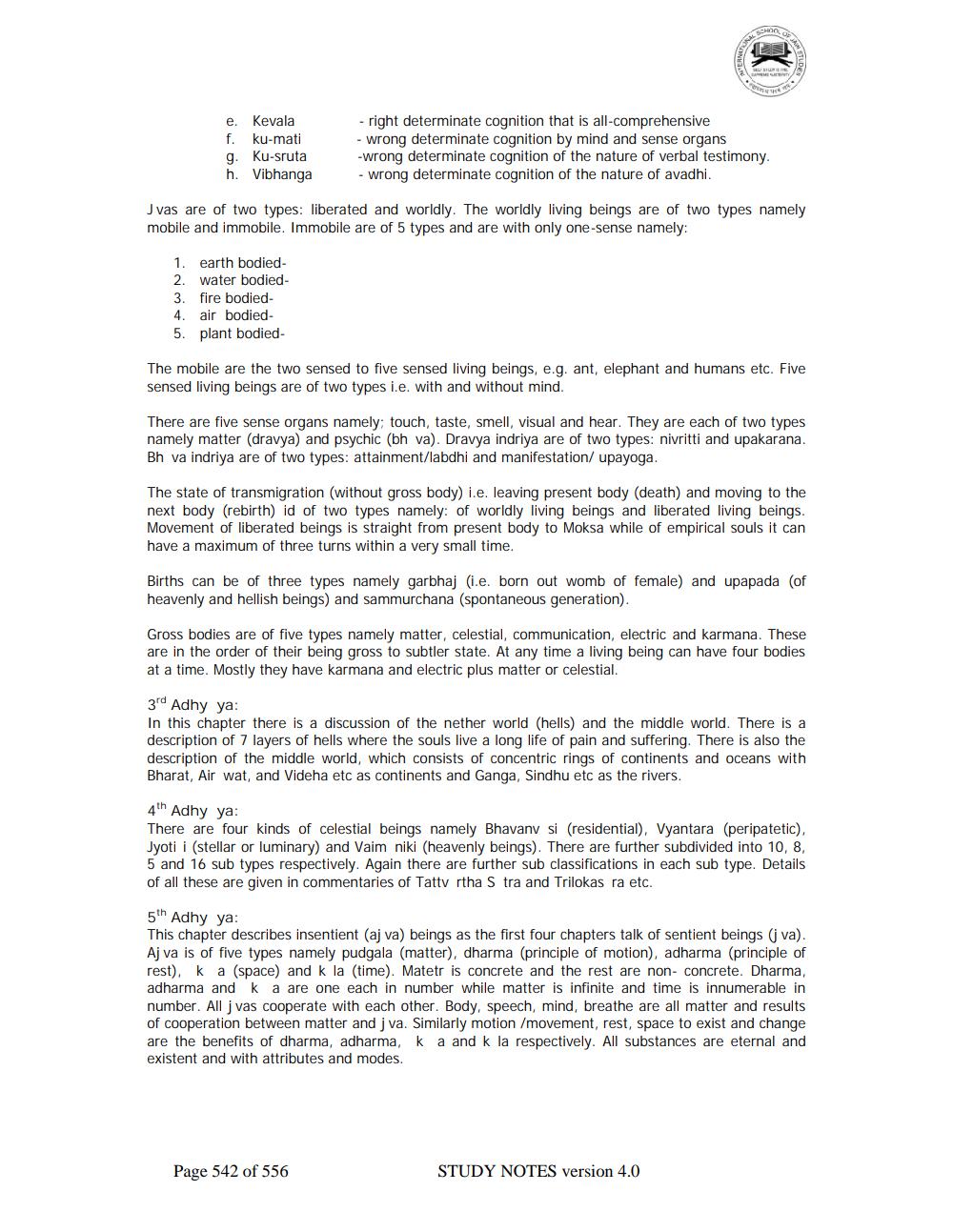________________
e. Kevala f. ku-mati g. Ku-sruta h. Vibhanga
- right determinate cognition that is all-comprehensive - Wrong determinate cognition by mind and sense organs -wrong determinate cognition of the nature of verbal testimony. - wrong determinate cognition of the nature of avadhi.
J vas are of two types: liberated and worldly. The worldly living beings are of two types namely mobile and immobile, Immobile are of 5 types and are with only one-sense namely:
1. earth bodied2. water bodied3. fire bodied4. air bodied5. plant bodied
The mobile are the two sensed to five sensed living beings, e.g. ant, elephant and humans etc. Five sensed living beings are of two types i.e. with and without mind.
There are five sense organs namely; touch, taste, smell, visual and hear. They are each of two types namely matter (dravya) and psychic (bh va). Dravya indriya are of two types: nivritti and upakarana. Bh va indriya are of two types: attainment/labdhi and manifestation/ upayoga.
The state of transmigration (without gross body) i.e. leaving present body (death) and moving to the next body (rebirth) id of two types namely: of worldly living beings and liberated living beings. Movement of liberated beings is straight from present body to Moksa while of empirical souls it can have a maximum of three turns within a very small time.
Births can be of three types namely garbhaj (i.e. born out womb of female) and upapada (of heavenly and hellish beings) and sammurchana (spontaneous generation).
Gross bodies are of five types namely matter, celestial, communication, electric and karmana. These are in the order of their being gross to subtler state. At any time a living being can have four bodies at a time. Mostly they have karmana and electric plus matter or celestial.
3rd Adhy ya: In this chapter there is a discussion of the nether world (hells) and the middle world. There is a description of 7 layers of hells where the souls live a long life of pain and suffering. There is also the description of the middle world, which consists of concentric rings of continents and oceans with Bharat, Air wat, and Videha etc as continents and Ganga, Sindhu etc as the rivers.
4th Adhy ya: There are four kinds of celestial beings namely Bhavanv si (residential), Vyantara (peripatetic). Jyoti i (stellar or luminary) and Vaim niki (heavenly beings). There are further subdivided into 10, 8, 5 and 16 sub types respectively. Again there are further sub classifications in each sub type. Details of all these are given in commentaries of Tattv rtha S tra and Trilokas ra etc.
5th Adhy ya: This chapter describes insentient (aj va) beings as the first four chapters talk of sentient beings (jva). Aj va is of five types namely pudgala (matter), dharma (principle of motion), adharma (principle of rest)K a (space) and k la (time). Matetr is concrete and the rest are non- concrete. Dharma, adharma and k a are one each in number while matter is infinite and time is innumerable in number. All j vas cooperate with each other. Body, speech, mind, breathe are all matter and results of cooperation between matter and j va. Similarly motion /movement, rest, space to exist and change are the benefits of dharma, adharma, k a and k la respectively. All substances are eternal and existent and with attributes and modes.
Page 542 of 556
STUDY NOTES version 4.0




